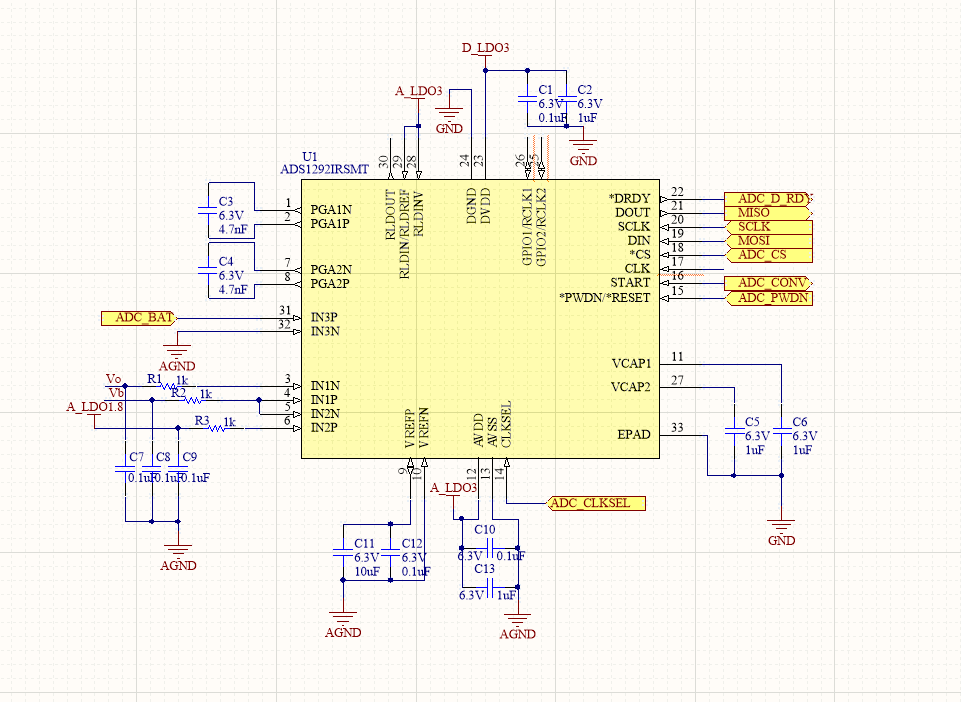Hi,
Using ADS1292, I've encountered a similar issue as https://e2e.ti.com/support/data-converters/f/73/t/867995?tisearch=e2e-sitesearch&keymatch=ads1292%20vref.
Our guess is that the chip is defective, but we're not quite sure of its comportment:
- We can write/read all register without any problems
- The chip is being supplied at 3.3V (AVDD and DVDD)
- The chip behaves as expected on reset (registers return to default value)
- When starting conversion, the drdy pulses as expected
Problem is, no matter the input (channel shorted, test signal, temp sensor, normal mode, ...) the conversion always return either 7F FF FF or 80 00 00 for both channel (both channel's gain are set to 1).
When probing, we realized that VCAP2 is at 5.28V, Vref and VCAP1 are at 0V. What we don't understand is how are we able to communicate and start conversion if the chip has been damaged?
Also, what might have damaged the chip? I've included our schematic for reference.
Thanks a lot!
Jacob



